Who, What, When, Where?
Have you ever been on a hike and found a fossil shell with no ocean in sight? Perhaps you have found a bone and wondered how the animal died and where the rest of its skeleton went off to. Well, a lot happens to an organism when it dies, and becoming a fossil is a special circumstance. How did it get to its final burial place? How do dinosaur bones end up in huge fossil graveyards? When one uncovers a fossil, there are many questions you can ask. That’s where taphonomy comes in!
Taphonomy is the study of everything that occurs to an organism between the time it died and the time it is discovered as a fossil. It’s an important discipline within paleontology, as it tells the story behind data within fossil bonebeds. Let’s look at what we can learn from taphonomy.
Types of Fossils
There are multiple types of fossils, each of which fall into one of two categories: direct and indirect fossils.
You can find a skeleton of an animal, which is a direct fossil. Another type of direct fossil might be a preserved leaf or a skin hide from a wooly mammoth.
You might also find indirect fossils like tracks, droppings (coprolites), or tooth marks! Indirect fossils often lend information about an animal’s behavior. Fossils may also form when sediment hardens around an organism’s parts. If the parts disintegrate, it may leave a mold. If sediment fills in this mold, it will create a fossil cast. These are indirect fossils.
Requirements for Fossilization
Relatively speaking, fossils are rare in the rock record. Things like decomposition, scavenging, and erosion tend to destroy organisms quickly. Destruction typically occurs before bones ever get the chance to become a fossil. An organism must be buried quickly and protected from exposure to become preserved. Otherwise, it might be eaten, washed away, or broken into tiny pieces.
Typically, a bone will need to be exposed to plenty of minerals for petrification (i.e. becoming mineralized). Usually this is caused by water in the sediment which buried the organism. The minerals from the water will fill empty spaces in a bone to petrify it.
Other types of preservation may happen such as freezing in permafrost, preservation in amber, or mummification. Several types of fossilization may preserve soft tissues, such as blood, vessels, or skin. However, the processes of freezing or mummification may especially preserve soft tissues.
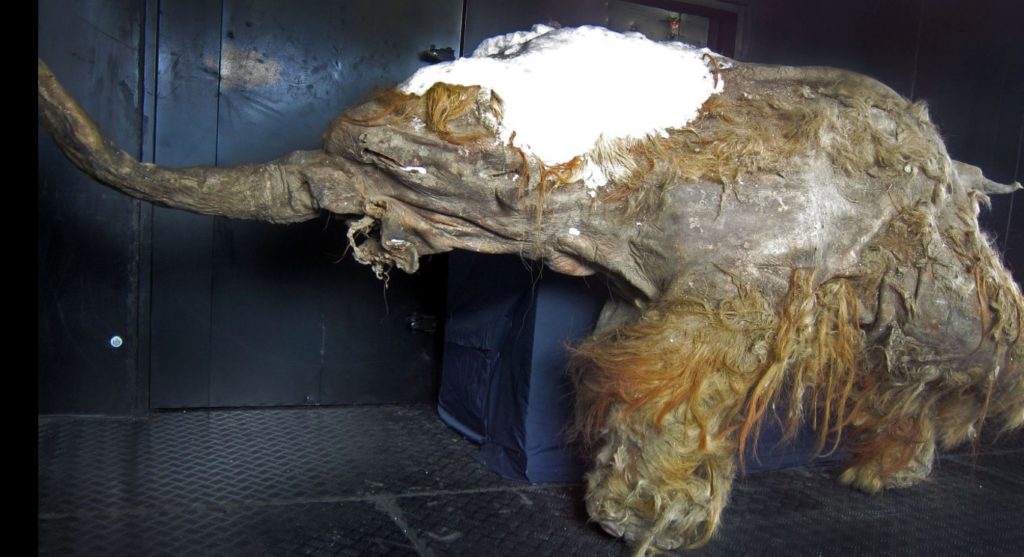
The Environment
An important part of any story is the setting. For taphonomic stories, the environment of the organism’s burial is the setting. Scientists use several pieces of data to pinpoint what kind of environment they are looking at in the rocks.
Because fossils typically need burial for preservation, the sediment around a fossil is an important piece of data to consider. Sedimentology, the study of sediment (e.g. sand, silt, or mud, etc.) and sedimentary rocks (e.g. sandstone, siltstone, mudstone, etc.), helps a taphonomist determine the environment of an organism’s burial. One way of doing this is looking at the rock layers themselves. Sediment layers often have features that give helpful clues as to the environment. For example, lake deposits will have layers of fine mud, perhaps with evidence for seasonal changes in the weather at the time of deposition. Other deposits, such as a shallow, beach environment, may contain “hummocks” caused by wave action moving water back and forth over the sand.
Fossils in Environment
You can get some helpful clues about the environment by looking at the types of fossils in the sediment. For example, if a paleontologist finds an ancient mudstone layer, they may wonder what environment it was deposited in. If that mud layer contains freshwater fish, you probably would expect the original environment to be a lake or some other aquatic system. This is a great first step at looking at an environment.
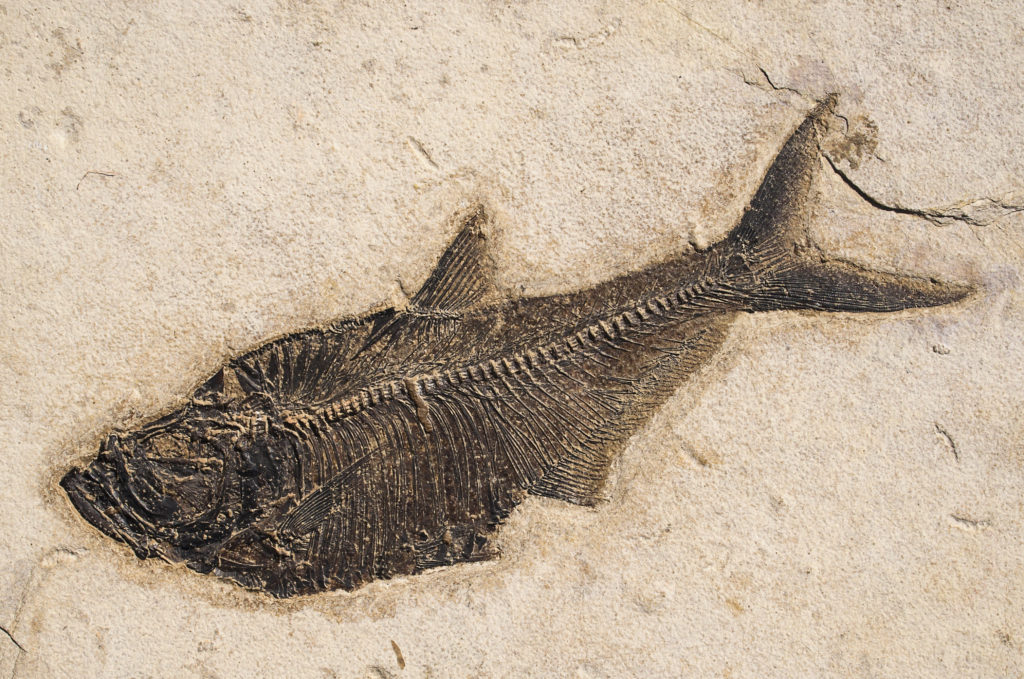
Though the types of fossils present are also helpful clues to the environment, they are not foolproof. Because fossilization requires water, many deposits include animals washed into a river, lake, or marine area. Though the organisms may not be aquatic, some event may have trapped them in a watery environment suitable for fossilization. In this case, a paleontologist must look at other aspects of the deposit to understand the story.
What Conditions Are the Fossils In?
The condition of fossils gives great insight into what happened to the organism before final burial. There are several aspects of this including (but not limited to) position of the fossil, articulation of bones, weathering and abrasion, and fracturing. There are many aspects of taphonomy we could explore, but we will focus on these points.
Orientation
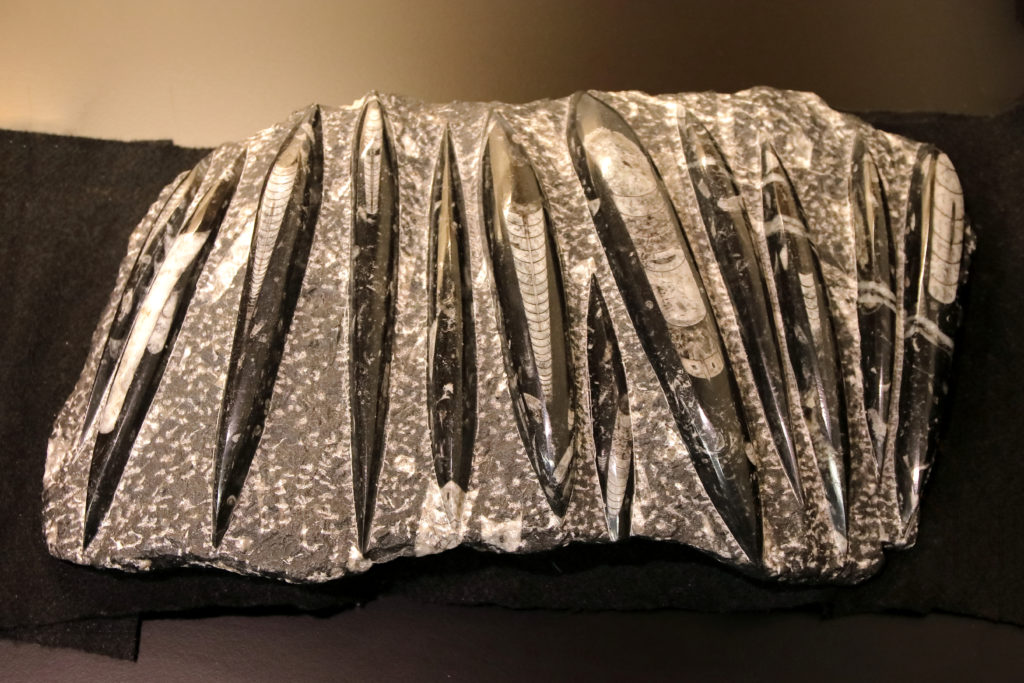
Fossils may be found in situ, or in life position. This gives a major clue to scientists about what happened in that area. Life position usually indicates very quick burial without later disturbance from the environment.
On the opposite side, there may be evidence of water transport. Transported fossils eventually settle. Sometimes they settle in a preferred orientation which could help a paleontologist understand which way water was flowing. However, if fossils are in a completely random orientation, it could mean several things. One option is that there was some sort of catastrophic flow mixing the bones or shells into random orientations. If that flow suddenly stops and settles, the fossils could be preserved in a random position. Another cause of random orientation is a very calm environment; if an organism died or fell in a random spot, the current would not disturb it . This is especially relevant for organisms such as bivalves.
Sometimes, other organisms affect the position of fossils. Occasionally, when animals die, predators move their remains. In this case, we can learn much about the ecological relationships between organisms.
Bone Articulation
If a skeleton is found with its bones still attached (or articulated) this is evidence for burial close to the time of death. Bones naturally fall apart and decompose when not protected from exposure. When skeletal features remain connected, it indicates rapid preservation. If they have fallen apart, there must have been some amount of decomposition time before final burial, or enough agitation from transport to tear them apart. Additionally, after disarticulation, water or wind may transport individual elements of the organism’s skeleton away. Taphonomists call this winnowing. A deposit may be missing all of an organism’s smallest bones because they are the easiest to lose!
Weathering and Abrasion
If a bone has been exposed to an arid environment for a long time, it may exhibit cracking or flaking due to weathering. If it has been transported very far, it might be broken up and rounded at the edges by abrasion. Depending on how far the bones traveled, they may not even be recognizable as particular skeletal pieces!
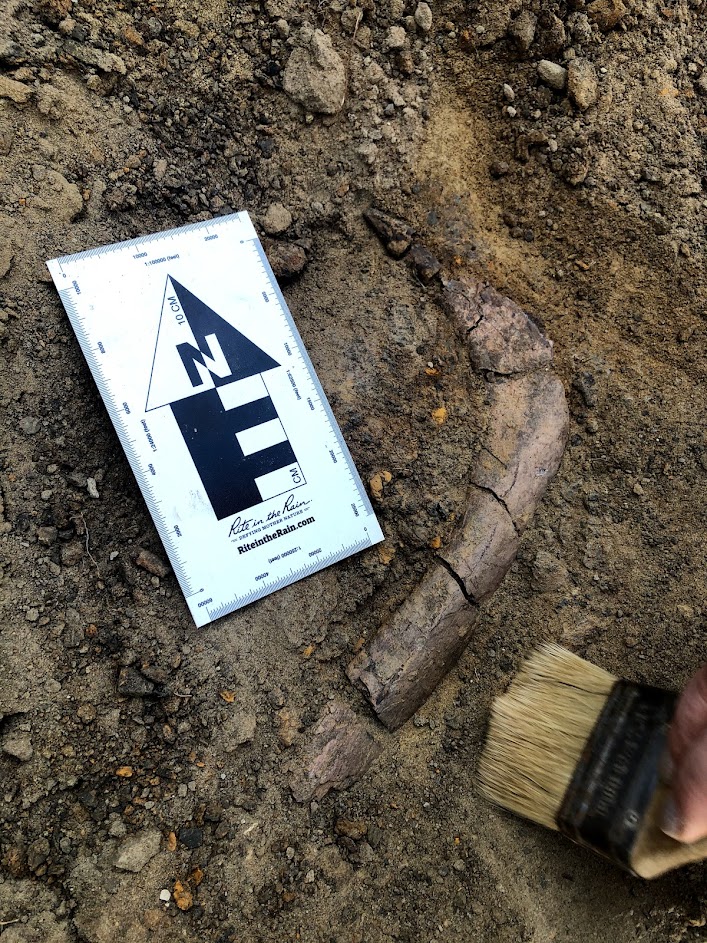
Fracturing
Bones might break apart for several reasons and at various times. When a taphonomist observes breaks and fractures on a bone, they might look for signs of healing. This would indicate that the fracture happened long before death because the animal had time to begin recovery. However, many times there are fractures that happen right before or after death. Spiral fractures, for instance, would occur in a fresh bone. Other possible types of fractures include trampling and crushing of bones after death. Scratches on the bones can help indicate this. Other fractures may be from the pressure of overlying sediment during the burial process.
Building the Story
After collecting observations such as the identity of the animal and the environment and the condition of the fossil at burial, a taphonomist can begin constructing the story!
Imagine finding a burial ground of bones. You identify the bones as belonging to a species of sheep. Compared to a fully-grown sheep, all these bones are small in size. None of the bones are articulated. Many small skeletal pieces are missing (e.g. vertebrae from the spine and small bones such as phalanges of the fingers). You observe that the bones do not exhibit any cracking. Other than the condition of articulation, they appear well preserved (i.e. no abrasion, breakage, etc.). However, several of the bones have scratches and scores resembling tooth marks. There is no evidence of healing around the tooth marks.
Looking at the sediment in which they were buried, you notice that the sediment is well-sorted. It resembles a deposit from a water system on land. The long bones in the burial ground are all pointing in the same orientation.
What happened? One Possible Story:
The tooth marks are evidence that predators either attacked or later scavenged several young sheep. Those sheep had some time to decompose, aiding in the process of disarticulation. However, the sheep skeletons were not exposed so long that they exhibited any weathering. A local flash flood occurred and the water transported the sheep bones away from their original death site. This transport also may have contributed to the disarticulation of the bones. The flow oriented the bones so that the long bones all pointed in the same direction. Sediment quickly buried the bones, as there is no sign of breakage or heavy abrasion. Water from the flow leached minerals into the sediment and into the bones, preserving and petrifying the bones. Eventually, the sediment weathered and eroded, exposing the fossils to you!
Are All Fossils From the Flood?
In this story, a local event buried the bones. This is a common occurrence in the fossil record. Local catastrophes may result in mass burials of organisms. Not all fossils are a result of the Genesis Flood. For example, a large deposit of fossils at La Brea Tar Pits represents animals buried in tar, not the global Flood.
However, taking various stories of deposits and looking at the big picture within rocks may help creationists to understand the Flood that happened in Noah’s time. If we understand rapid burial and catastrophes, if we can discern which deposits may represent smaller, local events, we can study creation and history within the rocks. Several aspects of historical geology can help us understand the Flood. As we look at bonebeds and rock layers all over the world, from the Precambrian and on, we can ask questions about the processes that buried the fossils and created the rocks we observe. As we see patterns in the rocks, we can find insight into what might have happened during the Flood.
Besides the taphonomic characteristics we have discussed here, some scientists have constructed criteria for identifying Flood deposits and discerning them from pre- or post-Flood deposits. The main question is: what kind of characteristics would we expect from a global flood versus regular processes before or after such a catastrophe? Some examples from Whitmore and Garner include: marine deposits on continents, deposits of unparalleled extent (i.e. deposits of sediment that a worldwide event would be able to lay down versus a local event), and global and regional unconformities (i.e. large areas of erosion via the Flood waters).1 These characteristics of a deposit may help creation scientists determine whether an area, regardless of radiometric age, is from the Flood event or not.2
Conclusion
Paleontologists often work on understanding one fossil bonebed (or even one fossil) at a time. When seeking to understand the history of that fossil, they ask questions of taphonomy. Putting together clues from the fossil’s characteristics —such as position, orientation, abrasion, disarticulation, and fracturing— helps us understand what processes an organism went through after death and before discovery.
Uncovering details behind each story can help lend to a better understanding of the fossil record. In addition to the smaller scale questions, scientists can look at the broader story of geologic history. Creationist scientists can study fossil bonebeds for evidence of the Flood, as well as ask questions about widespread deposits that may shed much light on the Flood rocks.3
Footnotes:
- Whitmore, John H. and Garner, Paul (2008) “Using Suites of Criteria to Recognize Pre-Flood, Flood, and Post-Flood Strata in the Rock Record with Application to Wyoming (USA),” Proceedings of the International Conference on Creationism: Vol. 6, Article 35. ↩︎
- Whitmore and Garner, 2008, Vol. 6, Article 35. (See Footnote 1) ↩︎
- Whitmore and Garner, 2008, Vol. 6, Article 35. (See Footnote 1) ↩︎

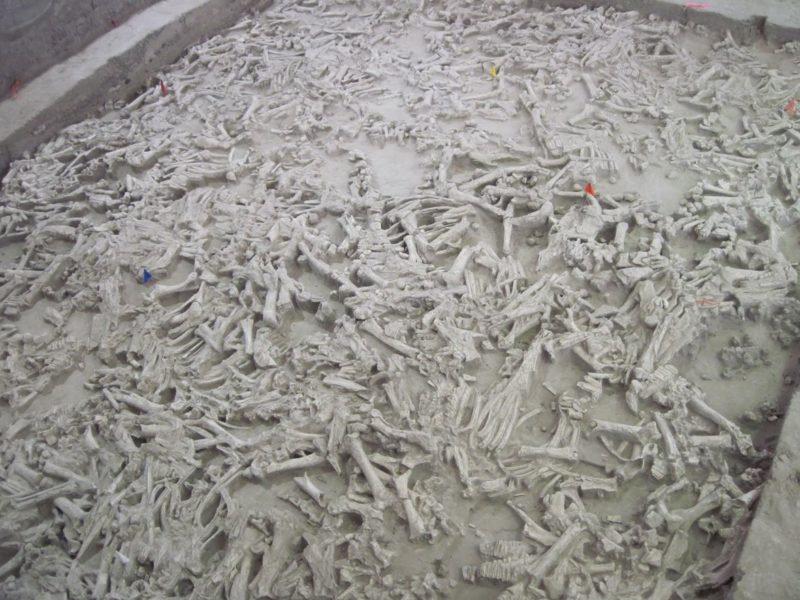










For this they willingly are ignorant of, that by the word of God the heavens were of old, and the earth standing out of the water and in the water:
Whereby the world that then was, being overflowed with water, perished:
1Peter 3: 5,6
It should not be a surprise that godless evolutionists hide the truth of taphonomy in their universe of lies
They push the knowledge of God out of their thinking and with that gone also goes wisdom
Hi Jon,
Thanks for the comment. A taphonomist, whether creationist or not, can study a bonebed or a fossil and infer taphonomic processes and stories. There are many great taphonomists who are not creationists who study how fossils form and what processes they might go through as they fossilize. They will likely come to different conclusions on aspects of the data (such as timescales, etc.) because of their worldview. However, they aren’t necessarily intending to hide evidence. They are looking at data and interpreting it from their framework. A creationist will have the Flood in mind as they think through large scale Flood and Post-Flood processes. This will change many of the big picture conclusions.
Noel
I just found this website from the Is Genesis History YouTube channel. It is so refreshing to see other students and recent graduates actively contributing to new research in creation related fields. I am an undergraduate student in engineering and have been interested in and followed creation-related fields for quite a while now (having read much of the work of Dr. Snelling, Dr. Wood, and others). I appreciate what you all are working toward here at New Creation and hope that you are able to keep up the good work.
-Spencer
Hi Spencer,
I’m glad that you are enjoying our blog. Thanks for stopping by.